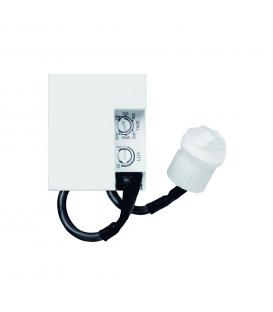Staircase lighting

Stairwell lighting is important to ensure the safety and comfort of people moving around stairwells, especially in dark conditions or at night.
There are several ways in which stairways can be lit:
- Wall lights: Installing lights on the walls of stairwells is one of the most common lighting methods. Lamps are placed at a suitable height to illuminate the entire staircase and prevent shadows that could cause a hazard to users.
- Hanging luminaires: If the staircase is wide enough, hanging luminaires can also be installed above the centre of the staircase. These lamps not only illuminate the stairs but also give an aesthetic touch.
- Motion sensors: A smart solution for staircase lighting is to use motion sensors. The sensors detect movement and automatically switch on the lamps when someone approaches the staircase or starts ascending or descending it. This solution is energy efficient as the lamps switch off when there is no movement.
- LED lighting: The use of LED luminaires ensures efficient and long-lasting lighting. LED lights are energy efficient, making them an excellent choice for long-term use.
- Emergency lighting: When lighting stairwells in public buildings such as apartment buildings, commercial buildings or hotels, it is important to have emergency lighting. This system provides light in the event of a power failure and is vital for evacuation safety.
- Handrail handrail lighting: In some cases, lighting of the handrail on the staircase may also be considered. This further increases visibility and safety for users.
When designing stairwell lighting, it is important to take into account local safety regulations and to provide adequate lighting that avoids unnecessary shadows and shines evenly and does not blind users. Care should also be taken to ensure the quality of light to prevent eye fatigue and other problems when moving around stairs.






